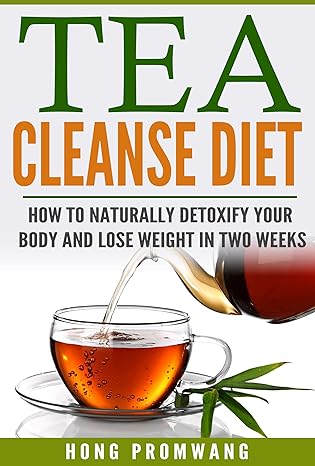Book Summary:
“The Tea Cleanse Diet” is a comprehensive guide to natural detoxification and weight loss, written by Hong Promwang. The book presents a unique approach to cleansing the body using tea as a primary ingredient, along with other natural methods to boost metabolism, improve digestion, and enhance overall health.
Overview:
Hong Promwang, a naturopathic doctor, shares her expertise on how to use tea as a key component of a detox diet. The book is divided into three main sections:
- The Science Behind Detoxification: An explanation of the body’s natural detoxification processes and how they can be enhanced through dietary changes.
- Tea-Cleanse Diet Plan: A step-by-step guide to incorporating tea and other natural ingredients into your diet, along with a two-week meal plan and recipe book.
- Supplements and Lifestyle Changes: Tips on how to supplement the tea cleanse with other natural methods, such as exercise, meditation, and stress management.
Key Concepts:
- Tea’s Detoxifying Properties: The author explains how various types of tea, including green tea, black tea, and herbal teas, can help remove toxins from the body.
- The Importance of Digestive Health: Hong Promwang emphasizes the role of a healthy gut microbiome in detoxification and weight loss, highlighting the benefits of probiotics and prebiotics.
- Boosting Metabolism: The book provides tips on how to increase metabolism using natural methods, including tea, spices, and other herbal ingredients.
- Reducing Inflammation: The author discusses the role of inflammation in weight gain and health issues, and offers strategies for reducing it through diet and lifestyle changes.
Key Strategies:
- Tea-Cleanse Program: A detailed plan for completing the tea cleanse, including daily intake recommendations and meal ideas.
- Recipe Book: A collection of healthy, tea-infused recipes to support the detox diet.
- Supplement Guide: A list of natural supplements that can be used in conjunction with the tea cleanse, such as probiotics, vitamin C, and omega-3 fatty acids.
- Lifestyle Tips: Practical advice on how to manage stress, exercise regularly, and maintain a healthy lifestyle during the detox period.
Target Audience:
“The Tea Cleanse Diet” is suitable for individuals seeking a natural approach to weight loss and detoxification. The book is particularly recommended for:
- Health-conscious individuals looking for an alternative to traditional diet programs
- Those interested in incorporating tea into their daily routine
- People with digestive issues or sensitivities who want to improve their gut health
- Individuals seeking a holistic approach to wellness
Conclusion:
“The Tea Cleanse Diet” offers a comprehensive guide to natural detoxification and weight loss, using tea as a primary ingredient. By following the program outlined in the book, readers can potentially experience improved overall health, enhanced digestion, and increased energy levels.
Please note that while this book provides a natural approach to detoxification, individual results may vary. As with any new diet or supplement regimen, consult with a healthcare professional before starting the tea cleanse.


